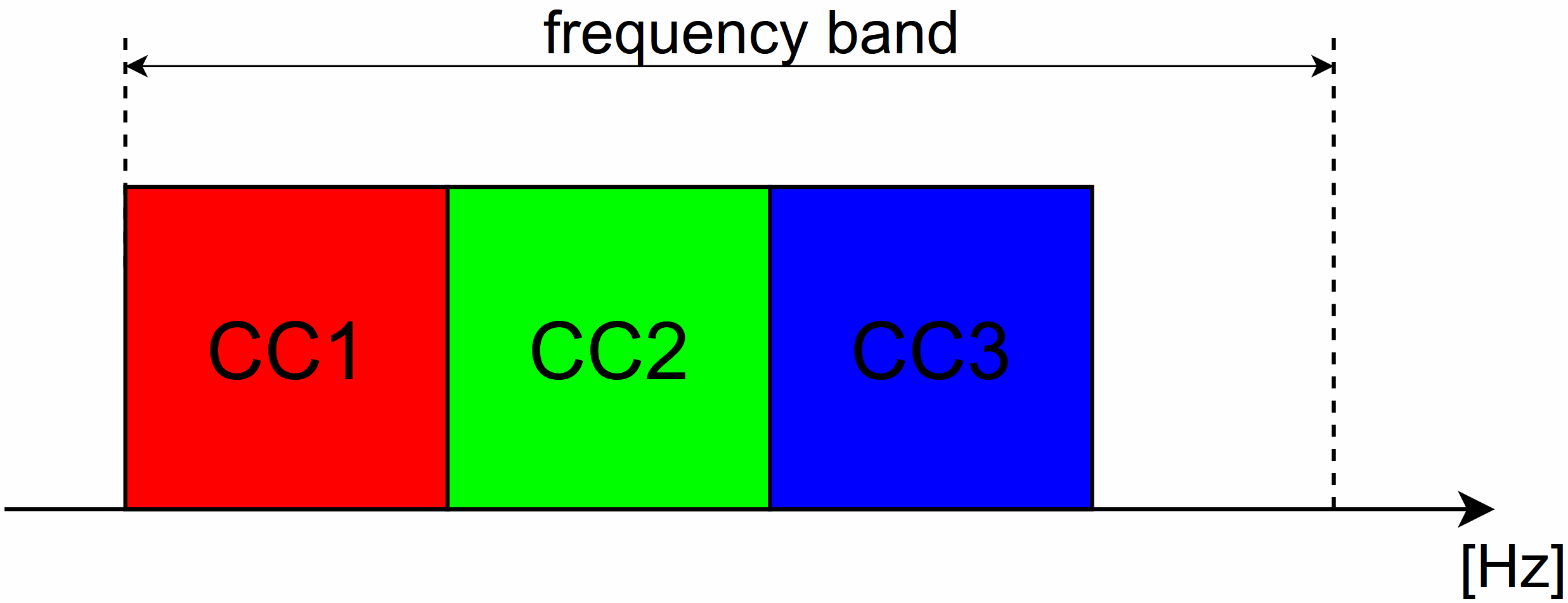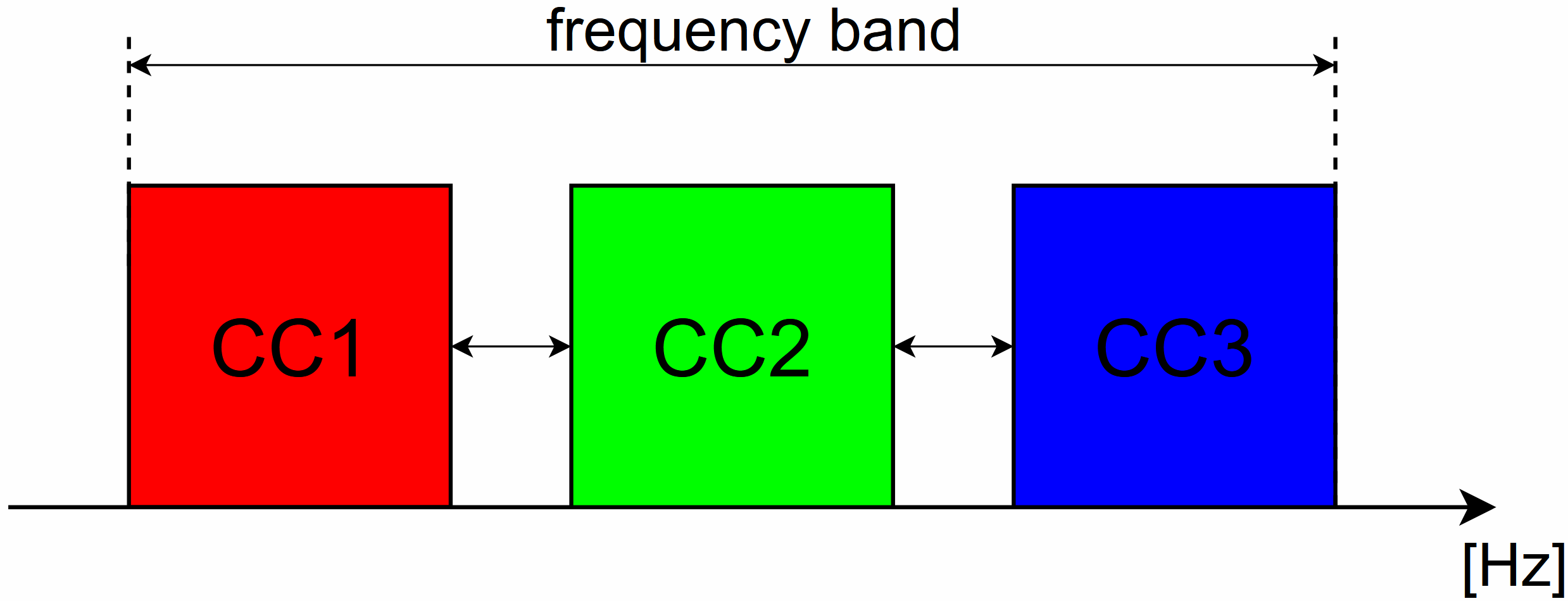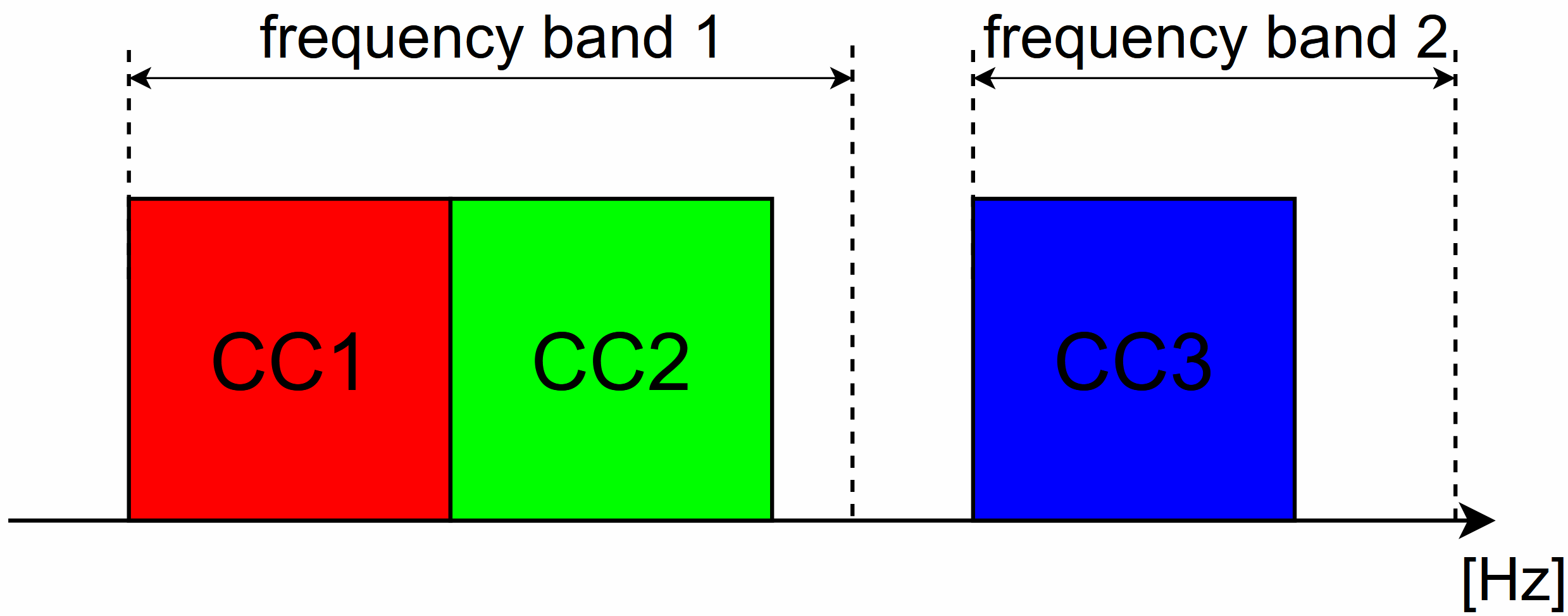Carrier Aggregation – what it is and how it works
23.01.2024
Carrier Aggregation – what it is and how it works
These days we use mobile phones involving 4G/LTE connection on a daily basics. You probably have no interest in knowing why are we having faster internet speeds. Have you ever encountered a term „Carrier Aggregation”? If you haven’t heard of it or you have heard but don’t know what it is, you are in the right place to expand your knowledge. In this article we will cover the topic of the Carrier Aggregation (CA) and its basics.
Basics
In simple words Carrier Aggregation (CA) is a technique used in LTE-Advanced to increase the frequency bandwidth by combining together two or more Component Carriers (CC). In the beginnings of the technique you were allowed to combine maximum 5 CCs what resulted with aggregated bandwidth up to 100 MHz (5 x 20 MHz).
Nowadays there are devices able to aggregate many more CCs what results in much higher bandwidth. CA can be used in both ways of implementing data transmission in LTE: FDD and TDD. For uplinks (UL) and downlinks (DL) in TDD the bandwidths of each CC, as well as their number, will usually be the same. In FDD number of CCs of UL is the same or lower that the amount of DL CCs.
Carrier Aggregation types
We can distinguish 3 ways of arranging aggregation. That would be:
- Intra-band, contiguous – as the name suggests, it uses contiguous CCs that belong to the same frequency band. It might be hard to achieve as providers have their LTE frequencies allocated.
Intra-band, non-contiguous – CCs that are being aggregated are from the same frequency band but have gaps between them.
- Inter-band, non-contiguous – in this situation CCs are from different frequency bands.
Component carrier types
As written before, component carriers are received from different base stations. Whereas, only one station delivers something called Primary Component Carrier (PCC). The station is called Primary Serving Cell which, as the only one from used stations, provides RRC connection. With the help of UL PCC and DL PCC the Primary serving cell and the device, they send themselves information contained in PUCCH (Physical Uplink Control Channel) or security parameters. The rest of the stations, are called Secondary Serving Cells, they deliver Secondary Component Carriers (SCC). They do not carry any extra information just user data. Whilst the change of PCC is done only at handover, the SCCs are up to us. They can be removed or added depending on the needs.
Carrier aggregation bandwidth classes
Bandwidth classes are just alphabet letters, defining maximum and minimum bandwidth, as well as the number of component carriers. According to 3GPP TS 36.101 version 16.7.0 Release 16 we can point out 6 different Carrier Aggregation bandwidth classes:
Carrier Aggregation configurations
Bandwidth classes, discussed in the previous subsection, are used to mix them with operating frequency bands to create something called: Carrier Aggregation configuration. You can encounter 3 types of CA configuration as there are 3 Carrier Aggregation types. Here we have one example from each of these groups:
- Intra-band, contiguous
CA_7B
Where: CA – Carrier Aggregation, 7 – operating band, B – Carrier Aggregation bandwidth class,
- Intra-band, non-contiguous
CA_3A_3A
Where: CA – Carrier Aggregation, 3 – operating band, A – Carrier Aggregation bandwidth class (separated 3A from another 3A indicates that there is a gap between them),
- Inter-band, non-contiguous
CA_3A-46D
Where: CA – Carrier Aggregation, 3 and 46 – operating bands, A and D – Carrier Aggregation bandwidth classes.
Conclusion
Carrier Aggregation (CA) is a very forward-looking, prone to upgrades technique that via increasing the bandwidth, increases the bitrate and the capacity of the network. There are many factors affecting the parameters of the aggregated signal, like: CA configurations, Component Carriers (CC), CCs types, CA bandwidth classes, CA types. So why only have one LTE connection, when LTE routers that support CA, can put together multiple LTE connections, also from different bandwidths, to increase your internet speed.








